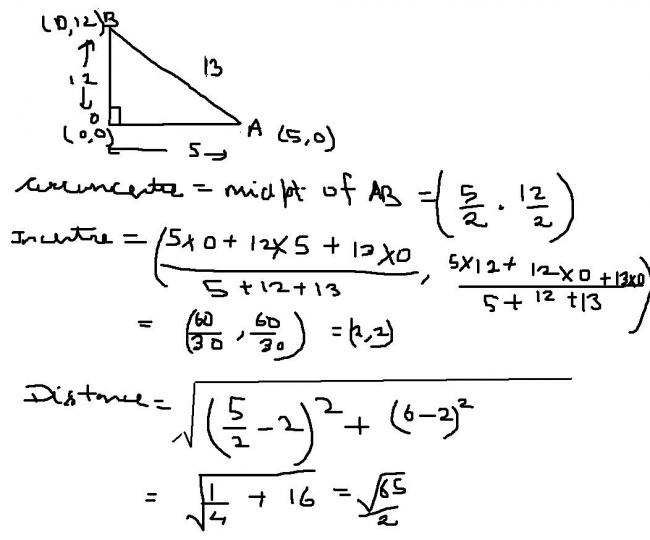Q1
Ques1) A triangle with sides 5,12 and 13 has both inscribed and circumscribed circles. The distance b/w the centres of these circles is
(a)2 (b) 5/2 (c) √65 (d) √65/2
Ques2) Given A(0,0) , ABCD is a rhombus of side 5 units where the slope of AB is 2 and the slope of AD is 1/2. The sum of abscissa and ordinate of the point c is
(a) 4√5 (b) 5√5 (c) 6√5 (d) 8√5
Ques3) A circle of finite rdius with points (-2,-2), (1,4) and (k, 2006) can exists for
(a) no value of k (b) exactly one value of k (c) exactly two values of k (d) infinite values of k
Ques4) If triangle ABC is formed by three straight lines u=2x+y-3 =0; v=x-y=o ; and w=x-2=0 then for k = -1, the line u+kv passes through its
(a) incentre (b) centroid (c) orhtocentre (d) circumcentre
-
UP 0 DOWN 0 0 4

4 Answers
u can also do for
1) calculate r(inradius=\frac{\Delta }{s}) and R(circumradius=\frac{abc}{4\Delta })
distance between incentre and circumcentre =\sqrt{R^{2}-2rR}
ans=\frac{\sqrt{65}}{2}